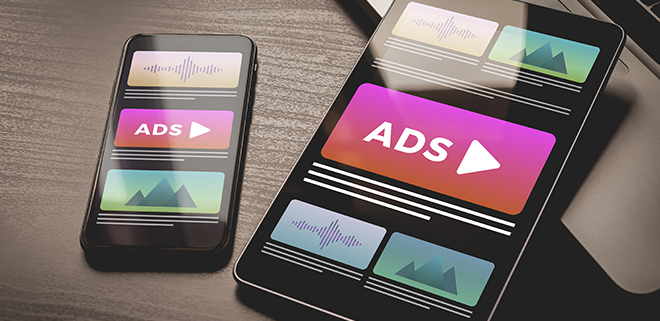
Instream video vs outstream video, that is the question.
In August 2022, the IAB Tech Lab released a set of video ad standards that changed the definition of instream and outstream video.
The updated guidelines defined instream video as sound on and playing before, during, or after streaming video content that the user requested, delivering within a player, monetizing content the publisher provided, and including linear and nonlinear ads, which didn’t need to be videos.
Unfortunately, those updates created a challenging video ad landscape for publishers, especially smaller ones. About 90% of what used to be considered instream inventory was now labeled outstream. In addition, it restricted plenty of quality inventory from being labeled as instream, thus wounding both publishers’ and advertisers’ capabilities.
To remedy this mistake, the IAB Tech Lab has further amended their 2022 video ad updates to redefine the meaning of instream and outstream video inventory.
Jenn Chen, President and CRO, Connatix 
Andrew Byrd: Can you walk me through, more specifically, exactly how publishers were struggling with the previous standards?
Jenn Chen: The industry had standards to define instream, but they needed to explain it more clearly. Part of the new definition puts the onus on the publisher to amend how their videos are showing. The video will either have audio or have a bunch of other things to oversimplify it.
The challenge was a surprise because tons of publishers have excellent video content. For years, they intentionally showed video content without audio, even if there was an abysmal experience because it’s very interruptive for the user. Consequently, most of what they want to convert will take time and investment.
Even if they don’t want to convert to audio, they have to make highly relevant videos and create something from scratch that matches the article exactly, or they have to change their entire page layout to conform to some of these other requirements. It began a slippery slope where the industry struggled to monetize the video inventory. It has implications for their business model and how advertisers perceive their website’s quality. It also created a new way of pricing a marketplace and a much more rigorous and calculated approach to defining video.
Luca Bozzo, Associate Director Programmatic Partnerships, Connatix 
Andrew Byrd: The recent video ad updates were to help rectify the challenges the initial standards created. What are the more recent updates?
Luca Bozzo: The working group set out to solve some of these issues by slightly expanding the definition of instream to the root of its meaning. The heart of instream is simply video that the consumer requested and consumed. For example, if a consumer searches YouTube for a video and clicks on it, that is instream content.
But there are other ways to signal intent other than sound on. Sound on is one way, but if a consumer clicks to start the video experience, that can infer intent to consume. Suppose they go to the video section of a website. In that case, there’s nothing else to watch other than video content, so even if it starts witj sound off, it technically still would be content that the consumer requested and hence instream. The main goal at first was to broaden that definition.
Chris Kane, Founder, Jounce Media 
Andrew Byrd: You have a very well-rounded overview of the state of the internet and the supply chain. How do you think the struggle to define instream vs. outstream affects the supply chain overall?
Chris Kane: Every ad tech company, The Trade Desk, Google, Magnite, and PubMatic, has inventory quality standards, which tend to be extensive sprawling documents. It is impossible to enforce those policies comprehensively. The goals are aspirational. This is how we would like to run our ad tech platform, recognizing that we will never achieve 100% compliance with these policies, but we’re striving to get as close to 100% as possible.
There was some ambiguity in the definition of instream versus outstream. It was hard for DSPs to enforce an ambiguous standard, and the video supply landscape got sloppy over the last five years. That’s the backdrop for why IAB Tech Lab, Connatix, The Trade Desk, and others are trying to get organized on video standards.
AB: The next step is to establish these new guidelines as an industry standard, and the Trade Desk announced that they would start implementing the new measures. Will this help move the needle along?
CK: I’m more pessimistic about this than I was a couple of weeks ago. The first step that needs to happen in the industry is that the IAB tech lab needs to build consensus around a standard, and they’ve done that. They struck out the first go-round, but now there’s a consensus around this new set of criteria. Now some powerful ad tech company needs to go and enforce those standards. Nobody needs to comply until a giant buyer says you must comply, or I’m not spending money.
That means that The Trade Desk or Google must start enforcing the standards. If they required accurate video inventory labeling, that would push the industry in a good direction.
Paul Bannister, Chief Strategy Officer, Raptive
Andrew Byrd: The end goal for the updates is to create industry-wide standards. Is this something the ad tech industry needs to work on?
Paul Bannister: Standardization benefits every advertising medium — CTV, video display, mobile, etc. The more we can standardize and increase transparency, the more we can make it so buyers know what they’re buying and feel they can trust who they’re buying from. Sign us up all day to make those standards happen and push those things forward — a cleaner, more transparent, and more well-lit industry creates more opportunities for publishers, advertisers, and creators to win.